I am in Zagreb for a wee vacation (freelancers never really take one but let’s pretend) and to be able to strike off an item that’s been on my To Do list for almost 40 years.
Zagreb became a magic place when I discovered the magazine called Svijet (The World) in my tweens. Before I could reach the age of majority and travel solo, however, the country fell apart in civil wars et cetera. I wrote about Svijet for Ms Magazine online, if you’re so inclined. Croatian children’s programming on the Yugoslav State TV was always good, Croatian pop music ruled, and Croatian women writers were something very new. (In the rest of the post-Yu republics, as well as most countries of the world, fiction, nonfiction and the entire publishing business were and still are dominated by men). But it was primarily Croatian journalism that got me hooked. That kind of writing is almost all gone now, even the spirit of it, excepting some online portals; Croatian magazines are now called Grazia, Gloria, Express, and are co- or entirely owned by one multinational media company or other. Somewhere in the rarely disturbed chests of drawers in my late parents’ old apartment in Montenegro can be found stashes of ‘magazines’ hand-made by my teen self, including my early attempts at TV, film and book criticism. My tone probably aped something I’ve read in Svijet the week before.
Then after the last of the Balkan wars ended in 1999, I moved to Canada and other locales populated the to-be-visited list and Zagreb became even less likely.
Today, Croatia still feels familiar to a degree. A lot of the recognizable Croatian brands from the Communist Yugoslavia era still exist, though the companies are most likely now foreign-owned. I have been shopping for food as a museum goer. I’m a visiting brand archaeologist.
Most things are closed here on Sunday but I did manage to spend an hour or so at the Museum of the City of Zagreb before they too closed at 2 p.m. The museum starts inauspiciously with a poorly lit ground floor dedicated to the pre-medieval periods but picks up marvelously after the 1500s. The panel listing every single woman declared a witch in Zagreb between the 1300s and 1750s woke me right up. Some escaped, others no one really could be bothered to burn, but a considerable number did die in flames, and as late as the 1700s. Maria Theresa finally banned the practice on her territories.
The mildest punishment you could get was having to wear a mask of shame for a while on a very busy square.
It was all one interesting room after another from then on. The guilds room is another section worth the price of admission. Zagreb’s medieval and early modern manufacturing and trade were dominated by guilds, which all had their saints, flags, seals, ceremonies, protocols of admission and internships. By the mid-1800s they were outlawed across Europe as a major enemy of capitalist growth. (If you’ve seen Wagner’s Die Meistersinger von Nürnberg, you’ll have the idea of the main conflicts. In the opera, the total novice attempts to win the meistersinging competition oblivious of the versifying rules… and four hours of plot later does win the day, and the girl’s hand in marriage.)
Zagreb’s museum diligently documents the rise of the middle class, with the emphasis on social and economic history. If you visit other museums across the Balkan region, this will not be the approach; most of those countries have spent an inordinate number of centuries warring and eking out independence from the surrounding empires, primarily from the Ottomans, but Croatia’s is a story of a region within a much larger Mittel-Europa entity of one kind or another. Ottoman empire appears on one panel as a spot of bother.
I also enjoyed the room on the laying down of municipal standards - in street naming and lighting, in burying practices (municipal cemeteries established), as well as the water and power supply.
The abodes of nobility and high bourgeoisie are getting bigger and more elaborate as we approach the late 1700s and early 1800s. Family portraits get commissioned left and right.
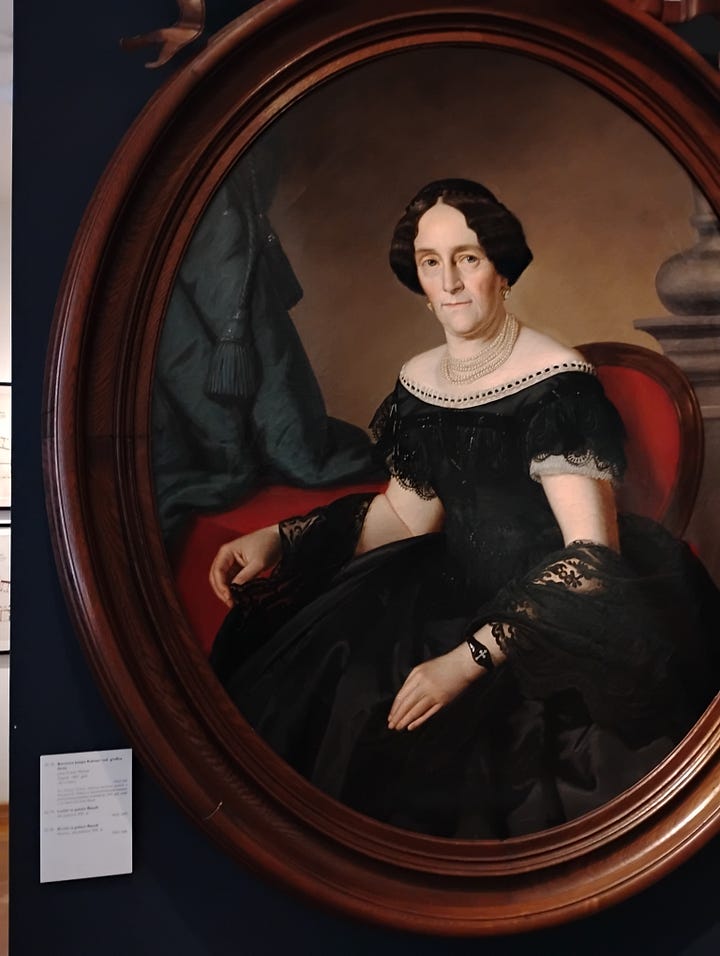
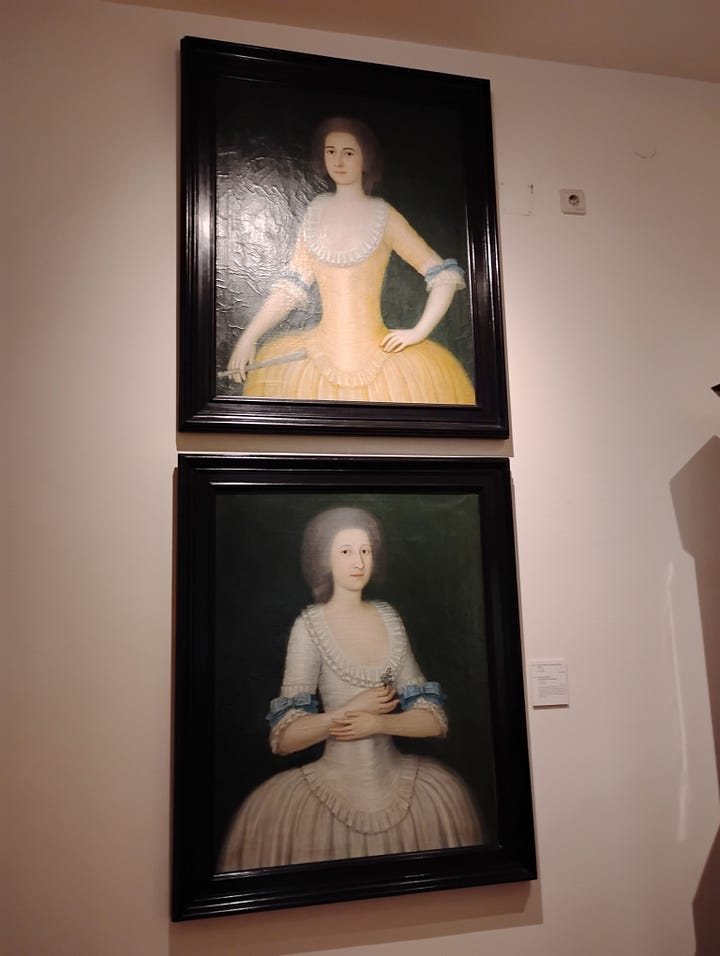
I’ll skip ahead to WW2 when Croatia was proclaimed independent by, paradoxically, its Nazi occupiers who chopped up the Kingdom of Yugoslavia into morsels of interest. Here’s the very art deco stylin’ wall of fascist propaganda of the time:
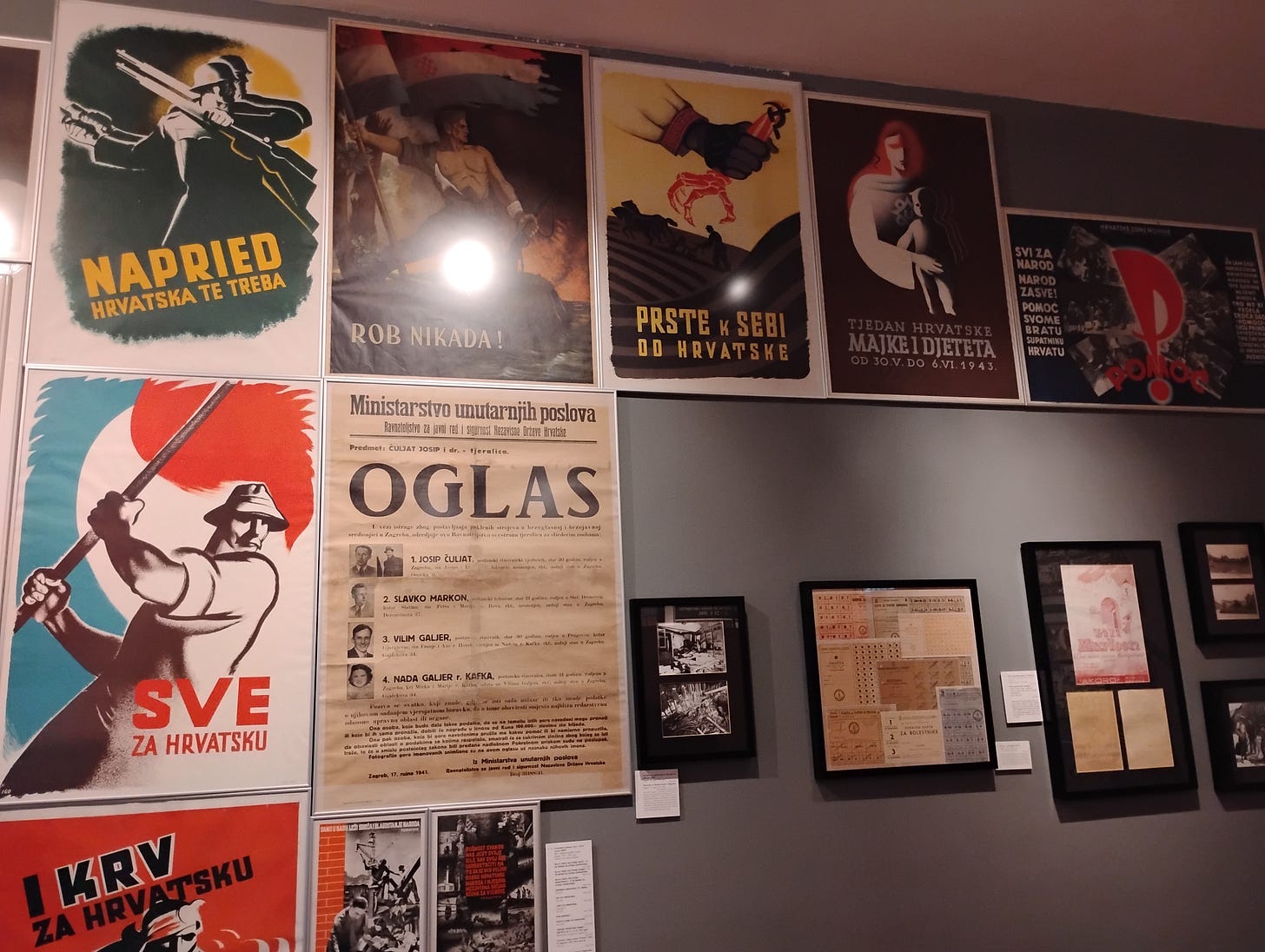
And these are some of the public notices from 1945 on, after the partisans won and took over:
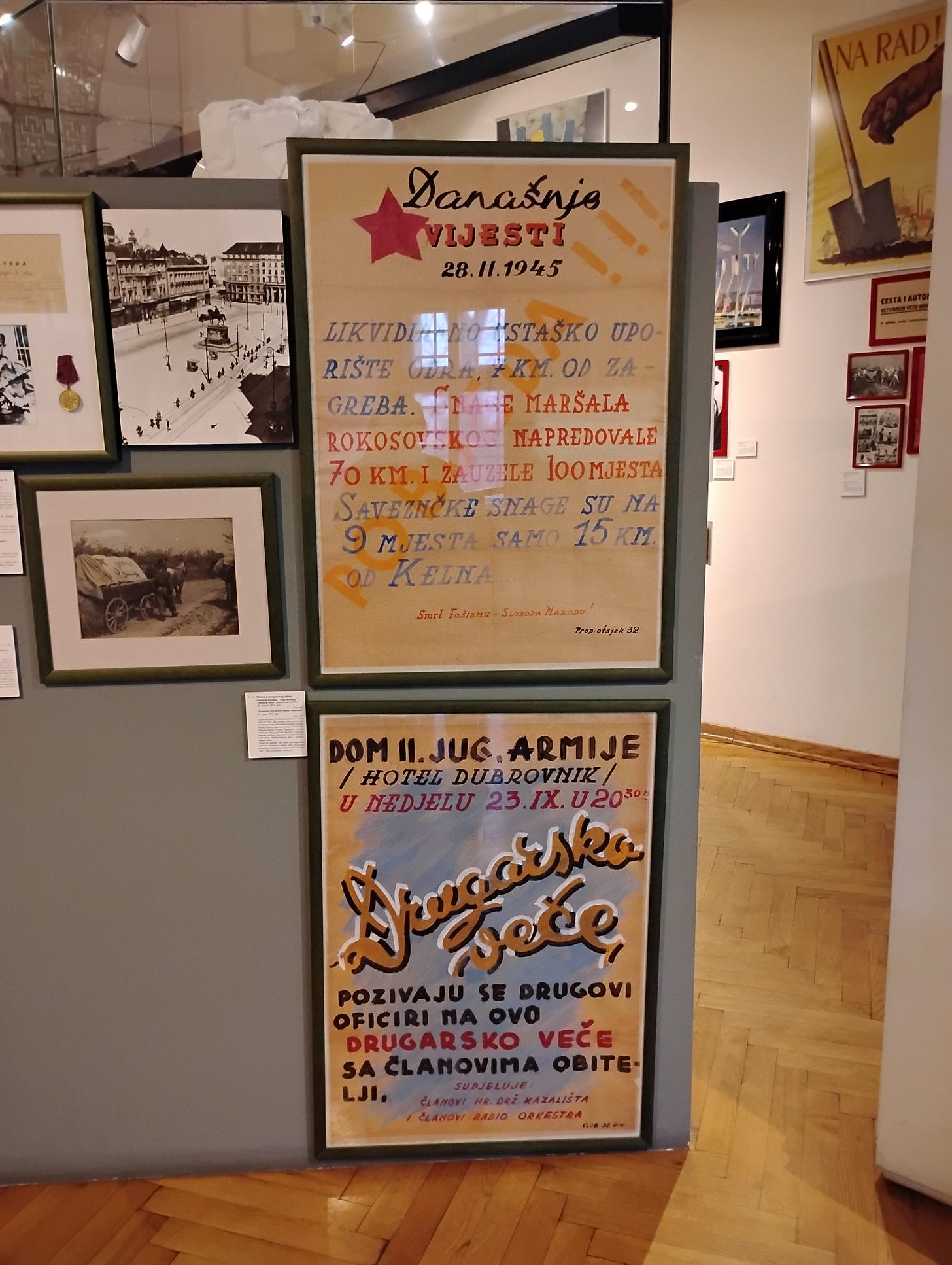
Further fast forward, and we are in the 1960s, and the Zagreb School of Cartoon Design is bagging an Academy Award and becoming well known internationally.
I vaguely remember the Professor Balthazar cartoon which I watched on TV (featured in this exhibition as well) but the one I watched on YT just now is a whole different experience. The art is an LSD dream, and the often dissonant music is rendered by a symphony orchestra. The story comes with a moral - of sorts. In this one, after the entirety of law enforcement fails to control the bandits who take over the city, Prof Balthazar outwits them by… serving them a cake soaked in the spirit of goodness. A feast that makes them capable of regret. The English translation of the title contains a pun not available in the original.
The history in the museum ends in 1991 and the creation of the first multi-party parliament and Croatia’s vote for independence from Yugoslavia. The Yugoslav Army shelling of the city makes up about half of that final room.
The top floor features a temporary exhibition on the industrialization and collectivization of the 1950s and 1960s and the way in which the Five Year Plan of economic development was realized and/or enforced in this corner of Communist Yugoslavia. (With the help of a lot of free construction labour, undertaken by thousands of enthusiastic youth.) It’s a sober look at the positives and negatives of an enforced modernization of a previously largely rural and religious society.
When I say that everything is closed on Sunday, this, I was surprised to discover, also means the box office of the largest performing arts organization in the country, the Croatian National Theatre. Even if there’s a show on (and there often is of a Sunday) the box office remains dark with online purchase as the only option. So I didn’t get a rush ticket for a show I wanted to check out — the ‘My husband’ play by the very same Rumena Buzarovska that Will Firth praised to high heavens in our recent chat. Maybe I’ll succeed tomorrow, and maybe I’ll enjoy it, even. I hear it described as a feminist agitprop - well, sure, the Balkan literatures need some of that, and also, if it’s too obvious it won’t really be fun?
Tomorrow, the bookstores open and with that the book events are back too, and Zagreb still has a lot of those every week. It’ll also be raining. I’m in a one-bedroom rental with the highest ceiling anywhere south of Vienna… and it’s overlooking a one-way three-lane thoroughfare beloved by the 1 a.m. joyriders.1 No ointment without a fly. It’s what makes things interesting.
What would you rather: this, or living in a nice Toronto building that’s right next to a basketball court which comes with its own share of 1 a.m., 3 a.m. and even 5 a.m. users in summer? Jury’s out.

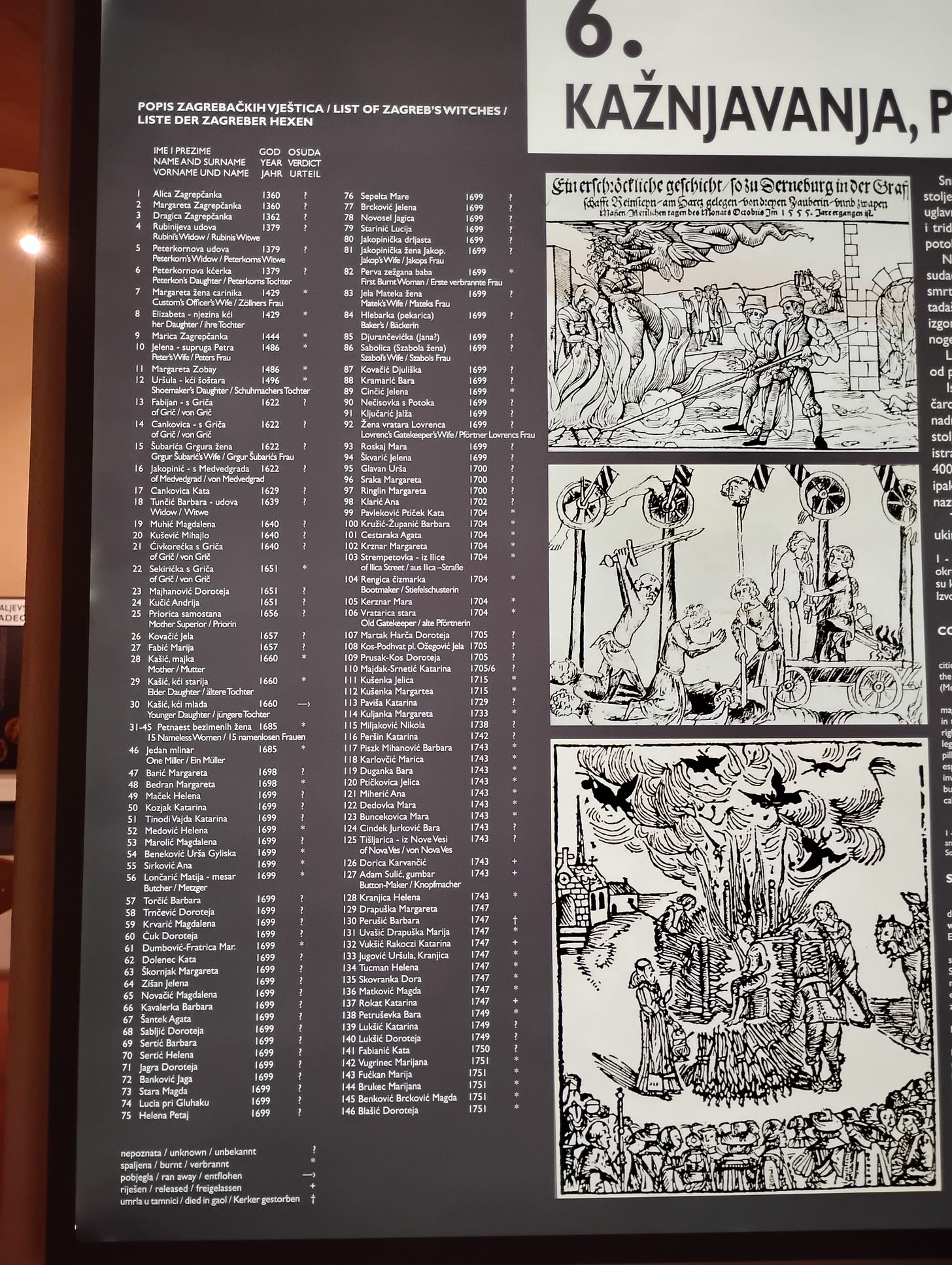

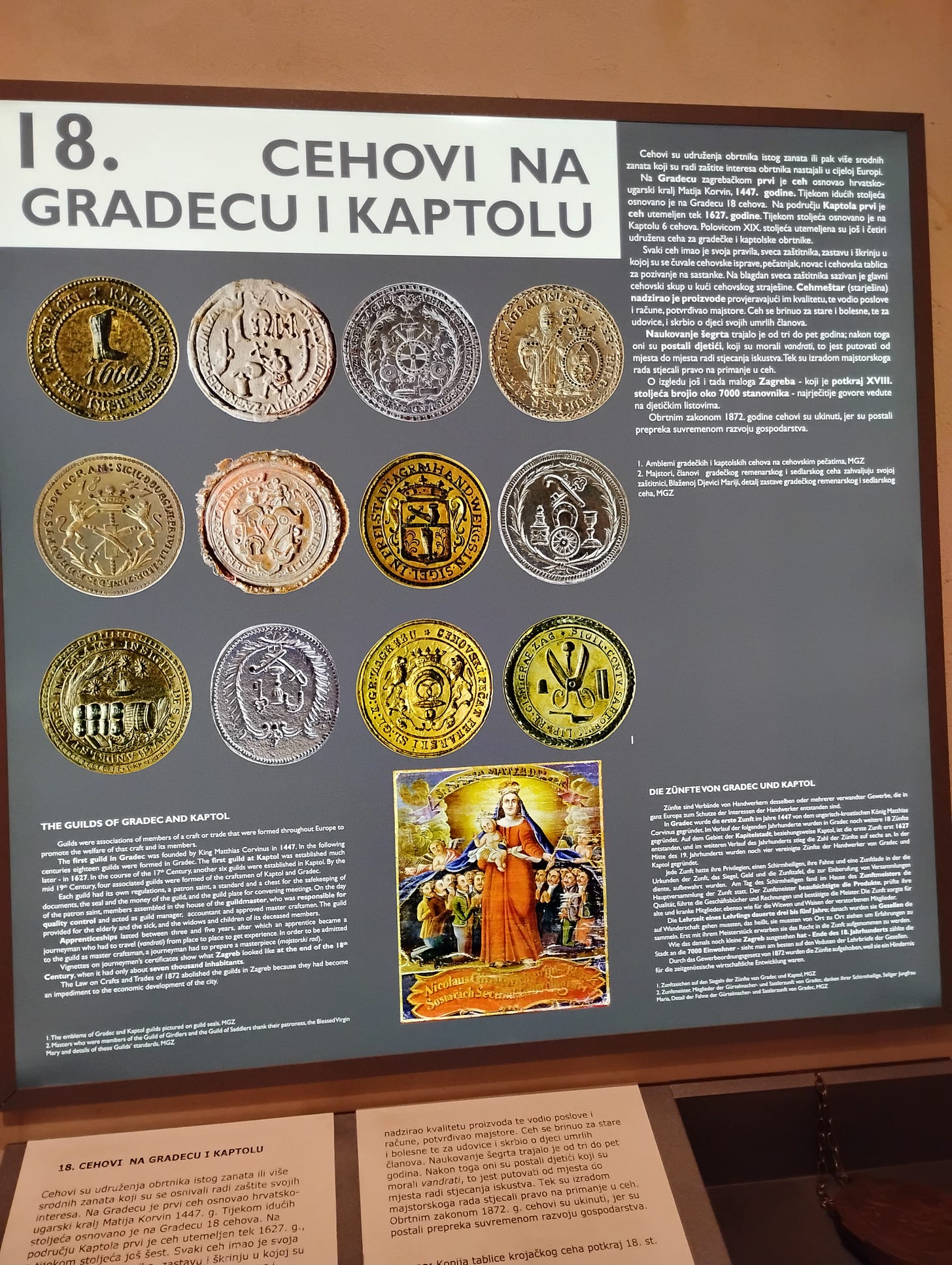
Bas ste lepo opisali Zagreb! Najlepsi za Advent i u prolece! A Svijet i Bazar su nam bili omiljeni casopisi u Ohridu! Svima nama nedostaje Yuga🥰
You must not miss the opera house, a jewal box in scale and one of the most intimate and precious in all of Europe.
Aso confirm or deny my understand that over the cenuries, notwithstand vilence of all kinds around it, it was never destroyed by external forces, only fires.
Harry Malcolmson